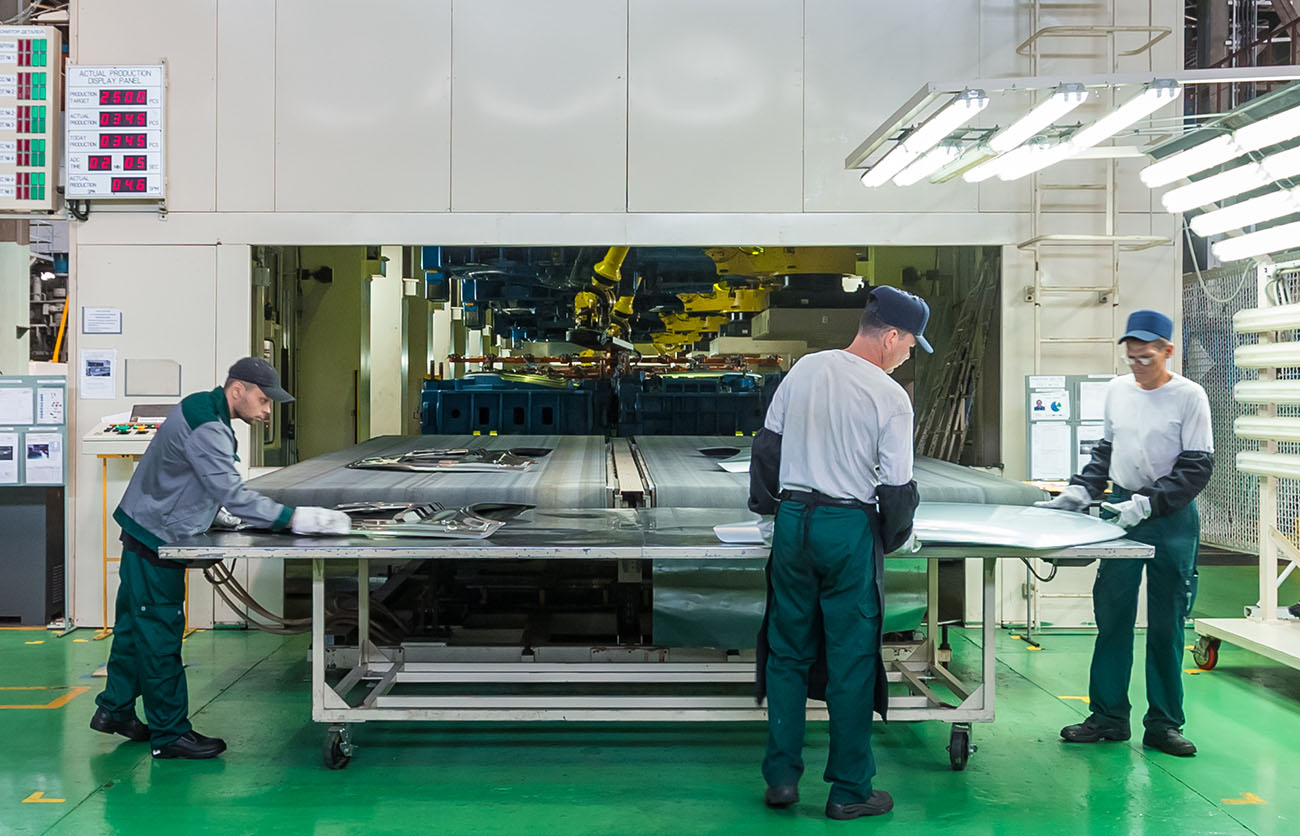Stamping
Quality Makes Us Global
Capabilities
Shaping Metal with Stamping Press Automation Manufacturing
The first manually operated metal stamping presses began to appear in the late 1800s during the Industrial Revolution. Today’s powerful hydraulic, and mechanical stamping presses can perform a range of metalworking tasks on sheet metal to produce a wide variety of final products, parts, and components.This cold-forming process shapes metal by placing it between two die surfaces pressed together by the stamping press to shape and/or shear the metal to the desired shape.

Metal Stamping Presses at Global Forming
Our fleet of stamping presses at Global Forming range in size from 12 tons to 150 tons of pressure and bed sizes ranging all the way up to 48 inches (121.9cm) by 84 inches (213.4cm). Stamping or pressing sheet metal is a low-cost, high-speed process that can be used to make large volumes of identical parts and components. It can be used to shape a variety of metals, including ferrous metals (such as iron-based alloys like stainless steel), non-ferrous metals (bronze, brass, zinc), non-standard alloys (beryllium nickel and beryllium copper), and other metals (silver, gold, platinum).
Punching
Blanking
Embossing
Coining
Bending
Flanging
Drawing/Deep Drawing
Hemming
Progressive Die Stamping
Transfer Die Stamping
The kinds of parts and components that can be made is huge, including simpler items such as clips, springs, washers, weights, and brackets to a variety of electronics components such as terminals, contacts, lead frames, springs, and pins, to all kinds of customized shapes and sizes as needed.
We will help you determine if the metal part or component you need would best be made using the metal stamping process, as opposed to roll forming or stretch bending, which are the other metalworking processes in the Global Forming wheelhouse. We also offer welding and assembly services as needed for your projects. Our expert management of the die tooling process, our experienced stamping team, and state-of-the-art stamping presses all combine into meeting your needs with high-quality stamped pieces produced quickly, efficiently, and cost-effectively. With Global Forming on the job, you’ll never have to worry about on-time delivery because that’s what we do with every client on every project. We look forward to connecting with you through the contact us page of our website, by phone at 317.290.1000, or by email to rfox@globalforming.us to discuss your needs and prepare a quote for our stamping services.